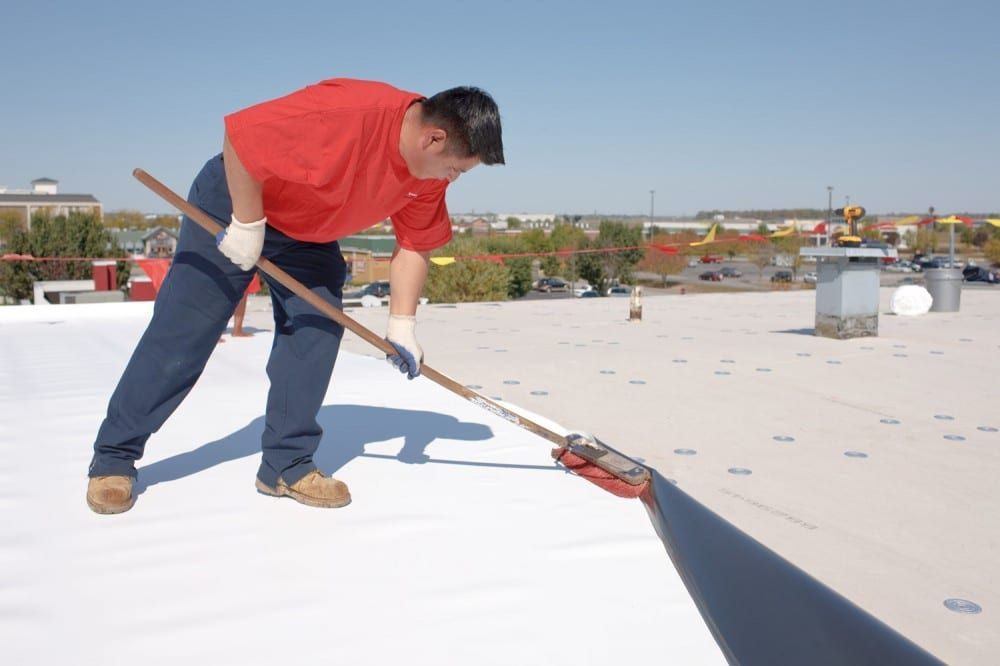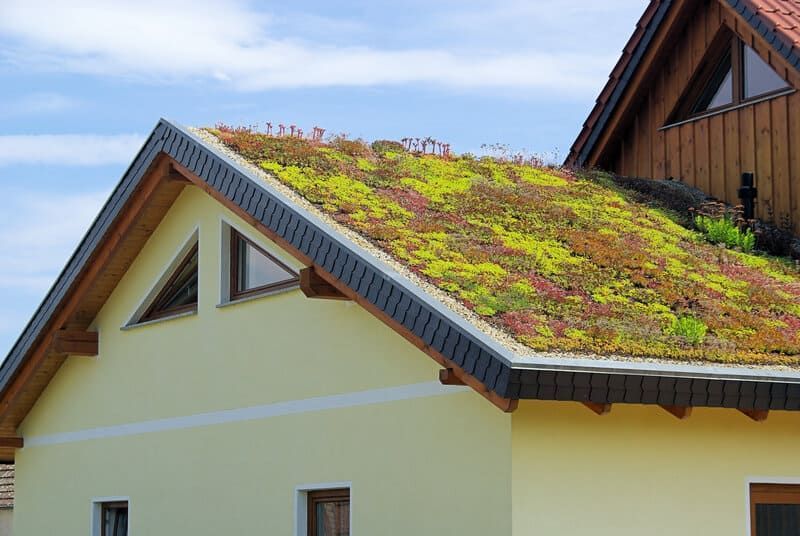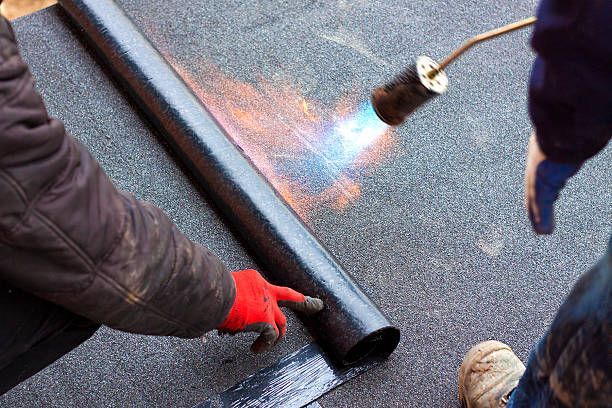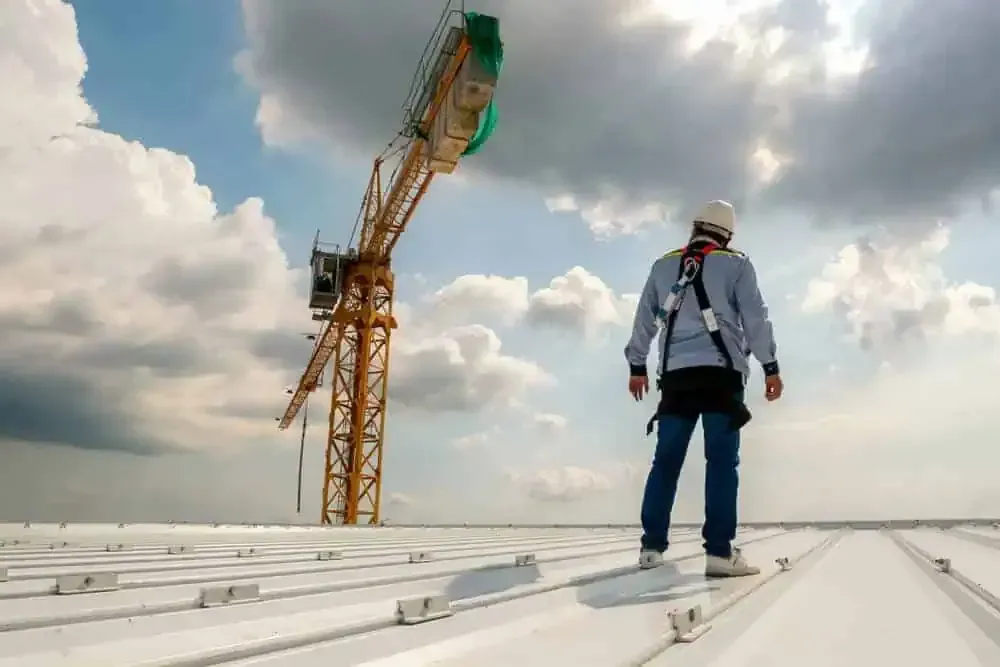TPO Roof Installation in Providence, RI
We specialize in TPO roof installation services that deliver exceptional value and performance. Our TPO roofing systems are designed to withstand harsh weather conditions while reducing your energy costs through their reflective white surface that minimizes heat absorption.
TPO (Thermoplastic Polyolefin) roofing has become increasingly popular for commercial buildings due to its outstanding balance of affordability and durability. We take pride in our expert installation process that ensures your new roof will provide reliable protection for years to come. Our team brings years of experience in commercial and residential roofing needs, guaranteeing unparalleled service quality for every project we undertake.
When you choose Providence Roofing for your TPO installation, you're not just getting a new roof – you're investing in peace of mind. Our commitment to excellence means we nail it the first time, saving you future headaches and expenses. Whether you're replacing an aging roof or installing one on a new construction, our professional team will guide you through every step of the process. Call us today for a free consultation and discover why property owners throughout the region trust us with their roofing needs.
What is TPO Roofing?
TPO roofing is a single-ply membrane roofing system made from thermoplastic polyolefin. The material is of a blend of polypropylene and ethylene-propylene rubber. combined with reinforcing fabric and various additives that enhance its performance. TPO membranes typically come in white, though other colors are available.
The standard thickness ranges from 45 to 80 mils (0.045 to 0.080 inches), with thicker membranes offering greater durability. We install TPO membranes that come in wide sheets, reducing the number of seams and potential leak points.
TPO installation involves rolling out the membrane across your roof surface and securing it using mechanical fasteners, adhesive systems, or heat-welding methods. The heat-welded seams create a watertight bond that's stronger than the membrane itself.
The Evolution of Thermoplastic Polyolefin
TPO roofing entered the commercial market in the 1990s as manufacturers sought alternatives to PVC. They are more environmentally friendly while maintaining its quality performance. Early formulations had inconsistent quality and durability issues.
Manufacturers have enhanced UV resistance, seam strength, and overall durability through advanced polymer technology and better reinforcement materials. The latest generation of TPO includes innovations like:
- Self-cleaning surfaces
- Enhanced fire resistance
- Improved flexibility in cold temperatures
- Greater puncture resistance
- Better long-term heat and UV stability
We stay current with these advancements to provide our clients with the most up-to-date TPO technology. The continuous improvement in TPO formulations means today's installations perform better and last longer than those from even five years ago.

Features of TPO Roofing
Our TPO installations combine durability, energy efficiency, and weather resistance to protect your property for years to come.
Reflective and Energy-Efficient Surfaces
TPO roofing features a highly reflective white surface that bounces sunlight away from your building. This reflective quality helps keep your interior spaces cooler during hot weather, reducing your air conditioning costs by up to 30% in summer months.
The energy-efficient properties of TPO make it an excellent choice for buildings in sunny climates. Many TPO roofing systems qualify for ENERGY STAR certification and may help you earn points toward LEED certification for your building.
We install TPO membranes that maintain their reflectivity over time. This long-lasting energy efficiency translates to consistent savings on your utility bills year after year.

Heat-Welded Seams and Durability
Our TPO roofing systems feature heat-welded seams that create a continuous, watertight surface across your entire roof. We use specialized hot-air welding equipment to fuse the TPO sheets together at molecular level.
These heat-welded seams are up to four times stronger than adhesive bonds or tape-sealed systems. The result is a monolithic membrane that prevents water intrusion even under harsh conditions.
TPO roofing offers excellent puncture resistance and flexibility. The material can expand and contract with temperature changes without cracking or splitting. This flexibility allows the membrane to withstand building movement and seasonal changes without compromising its integrity.

UV and Weather Resistance
TPO membranes contain specialized UV inhibitors and stabilizers that prevent sun damage. These compounds protect the roofing material from breaking down under constant ultraviolet exposure.
The membrane remains flexible at low temperatures. It resists cracks that can form in other roofing materials during winter. TPO also resists dirt buildup, algae growth, and damage from airborne pollutants that can degrade roofing over time.
We install TPO systems designed specifically for your local climate conditions, ensuring optimal performance regardless of weather patterns in your area.

Installation Process
At Providence Roofing Company, we follow precise methods to ensure your TPO roof installation delivers maximum performance and longevity.
1. Initial Roof Inspection and Assessment
We begin every TPO roof project with a thorough inspection of your existing roof structure. Our team examines the current roofing system to identify any moisture damage, structural issues, or other concerns that could affect the new installation.
2. Roof Substrate Preparation
Proper substrate preparation is essential for TPO membrane performance. We carefully remove the old roofing material when necessary and address any issues with the underlying structure. Our preparation process includes:
3. Material Selection and Roof Design
We work with you to select the optimal TPO membrane thickness and accessories based on your building's needs and budget. Standard TPO thicknesses range from 45 to 80 mil, with thicker membranes providing greater durability. Key design considerations include:
4. Detail Work and Custom TPO Roof Flashing
The success of any TPO roof largely depends on proper detail work around roof penetrations and edges. We carefully flash all roof penetrations including vents, HVAC units, and pipes using pre-formed TPO accessories or custom-fabricated flashing pieces.
5. Seam Welding and Testing
TPO seams create a monolithic membrane through hot-air welding, a process that melts the materials together at the molecular level. Our technicians use professional-grade welding equipment calibrated daily for:
6. Inspecting and Finishing Touches
The final phase involves comprehensive quality control to ensure your new TPO roof meets manufacturer standards and our own rigorous requirements. We perform a detailed walkthrough inspection checking for:
FAQs on TPO Roof Installation
TPO (Thermoplastic Olefin) roofing is an excellent choice for both residential and commercial buildings due to its durability, energy efficiency, and cost-effectiveness. Below, you'll find answers to some of the most common questions our clients have about TPO roof installations.
Why should I choose TPO roofing for my property in Providence?
TPO roofing is ideal for properties in Providence due to its energy efficiency, which helps reduce cooling costs during hot summers. Additionally, its durability and resistance to weather elements make it a long-lasting option for your roof.
How long does a TPO roof last?
A well-installed and maintained TPO roof can last between 20 to 30 years, depending on environmental conditions and maintenance practices.
Is TPO roofing environmentally friendly?
Yes, TPO roofing is environmentally friendly. It is 100% recyclable and does not contain harmful chemicals, making it a sustainable roofing option.
How long does it take to install a TPO roof?
The installation time for a TPO roof varies depending on the size and complexity of the roof, but it typically takes a few days to a week.
What are the common issues with TPO roofing?
Common issues with TPO roofing include punctures, seam failures, and shrinkage. However, these can be minimized with proper installation and regular maintenance.
Still have a question?
Call us for a free TPO Roof inspection. We serve all Providence neighborhoods with prompt, professional service that homeowners trust.
